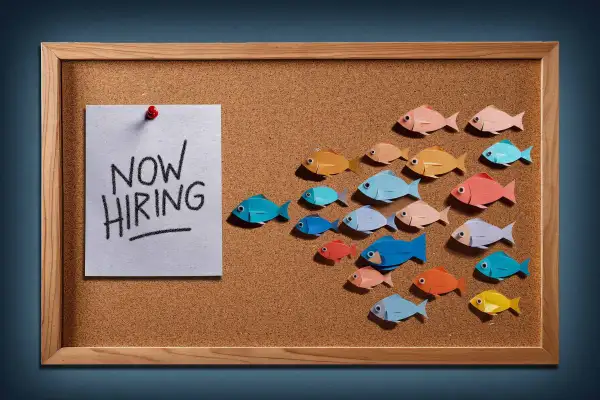Here's Why Americans Are Looking for Jobs at Record Levels

Looking for work? Join the club.
The share of U.S. workers who are on the job hunt has reached the highest level in over a decade, according to the Federal Reserve Bank of New York. New labor market data released Monday show that over 28% of respondents said they were actively looking for a job in July. That's the highest reading since the question was first asked in March 2014, when just under 32% said the same.
Economists say more people looking for work tends to be positive overall. But that's not always true for the workers themselves.
“It depends on if that person is employed or unemployed,” said Sofia Baig, an economist at Morning Consult, during the firm’s State of the Economy briefing last week. “It’s not a good thing when there are people who are unemployed and can’t find a job.”
The unusually high job-search reading comes after a surprise uptick in the unemployment rate to 4.3% in July. Rising unemployment sparked a major market sell-off earlier this month and spurred some notable economists to call for an emergency rate cut from the Federal Reserve.
The Fed has been holding benchmark interest rates at a two-decade high in its war against inflation. Higher interest rates can cool an overheated economy by making it more expensive to borrow money. When it’s more expensive to borrow money, people often spend less. As a result, employers may eventually hire less — or even cut their workforce.
But layoffs aren’t the only reason people are itching to find a job. The NY Fed’s data show that compared to last July, workers are increasingly dissatisfied with their pay, benefits and prospects for a promotion. That’s causing many of them to look for a better gig.
In fact, workers are less satisfied with benefits and promotion opportunities than they were at the height of the pandemic-era Great Resignation, when droves of fed-up Americans quit their jobs. The key difference is that the labor market has notably cooled since then, meaning employers aren’t as likely to hire people who just jumped ship.
Do recent layoffs signal a recession?
Headlines this summer have been dominated by big-ticket layoffs across several industries.
In July alone, Disney, Intuit, John Deere, the dating-app company Match and the media company NerdWallet all announced layoffs, affecting nearly 3,000 workers total. More cuts came in August, with Axios, General Motors, Intel, Paramount and carmaker Stellantis collectively slashing about 7,500 jobs.
Adding fuel to the panic, the recent uptick in the unemployment rate triggered what’s known as the “Sahm Rule,” a signal that the economy is headed for a recession. Created by the economist Claudia Sahm, the unofficial rule of thumb says that when the three-month average unemployment rate rises by at least 0.5% from the lowest point in the past 12 months, we’re in a recession. This rule has been accurate for every recession since 1970.
However, the official diagnosis of a recession is made by a committee of economists at the National Bureau of Economic Research. This committee takes its time in officially declaring a recession. Often, the announcement comes after the fact, as it waits “until it is confident that a recession has occurred.” According to NBER, the most recent recession was a brief one at the onset of the pandemic in 2020.
Some experts, however, are tempering the news of recent job cuts by pointing to the relative health of the job market and economy overall. They include Sahm herself.
“The U.S. is not in a recession, despite the indicator bearing my name,” Sahm wrote in an Aug. 7 opinion piece for Bloomberg. “While the economy is growing less quickly, it is growing. There is no recession, at least not yet.”
Another point experts are stressing amid the changes in the labor market is that 4.3% unemployment is, historically, pretty good. The unemployment rate was higher than that for a 16-year stretch between 2001 and 2017. Only in June 2017 did it dip to 4.3% before dropping into the 3% range that workers have grown accustomed to — pandemic notwithstanding.
“The labor market was decisively very tight. Now maybe it looks like that's not the case,” Kayla Bruun, lead economist at Morning Consult, said during the briefing.
“Maybe it’s neutral,” she added. “We’re not ringing alarm bells.”
More from Money:
How to Prepare for an Interview: A Step-by-Step Guide
This Stock Market Stat Has Predicted 83% of Presidential Elections in the Past Century

